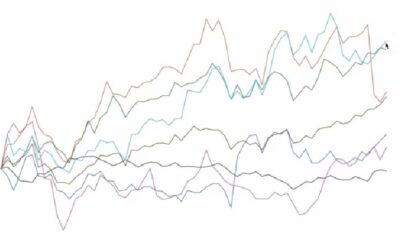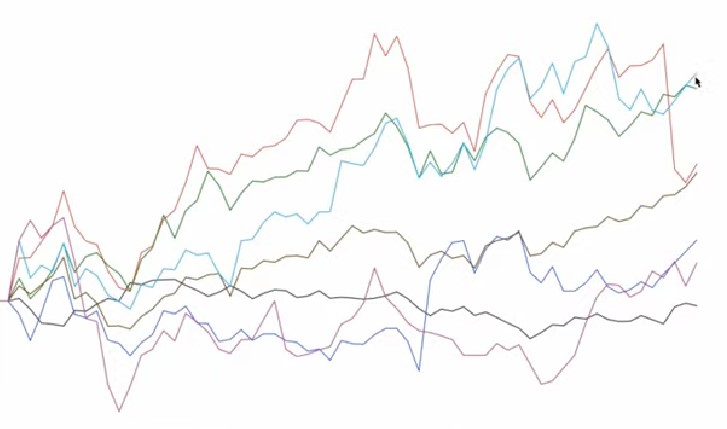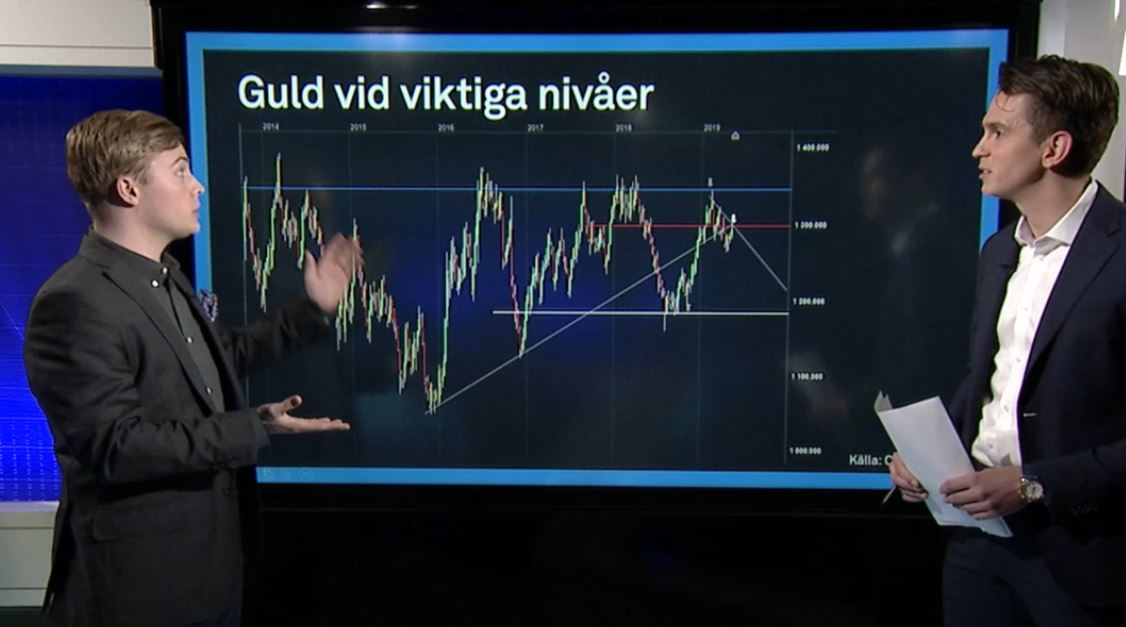Analys från DailyFX
RBA Holds Rates, Fails to Hold Aussie; US Dollar Under Pressure
Talking Points:
– The RBA held its main rate steady and tried to weaken the Aussie verbally.
– European currencies back at September/October 2008 highs versus Yen.
– Markets look to quiet ahead of event risk Wednesday through Friday.
To receive this report in your inbox every morning, sign up for Christopher’s distribution list.
INTRADAY PERFORMANCE UPDATE: 13:00 GMT
Dow Jones FXCM Dollar Index (Ticker: USDOLLAR): –0.24% (–0.10% prior 5-days)
ASIA/EUROPE FOREX NEWS WRAP
Higher yielding currencies are moving higher on the day although the same cannot be said about risky assets in general. US equity futures are slightly lower on the day and US yields are rather mixed. ‘Mixed’ would also be the best way to describe the US Dollar’s performance over the past several days, it having moved in an approximate 0.7% trading band since November 21.
The main push against the US Dollar today comes not from European FX (although they remain in the thick of things) but rather from the Tokyo session currencies. Of note, the Australian Dollar, after diving back to last week’s lows under $0.9060, has rebounded across the board in tandem with the New Zealand Dollar. The Reserve Bank of Australia kept its main refinancing rate on hold at 2.50% last night, and traders have thus far shrugged off commentary that the Aussie remains overvalued.

With perhaps a bit of short covering occurring in the commodity currencies after several days of weakness, a backdrop of steady or weakening US yields today or tomorrow might afford a bit of upside in the AUDUSD the next few days. While we remain bearish on the AUDUSD (given general upside pressure on US yields past week, month, and quarter), a rebound today could offer an opportunity to resell the currency higher:
AUDUSD Daily Chart: July 19 to Present

Want to automate your trading or trade baskets of currencies? Try Mirror Trader.
– The AUDUSD has carved out a sideways channel the past four days, between $0.9050 and 0.9160.
– The daily 8-EMA has been respected thus far as resistance during the downtrend the past three weeks.
– A close above the daily 8-EMA (0.9145) would give room for the pair to rebound back into a familiar supply/demand zone since July, between 0.9210 and 0.9280.
– Given the nature of the decline, preference is to sell rallies rather than buy dips.
– Ideal selling zone over next few days: 0.9250/55 (21-EMA) to 0.9280 (descending TL off of October 23 and November 20 highs).
ECONOMIC CALENDAR – UPCOMING NORTH AMERICAN SESSION
There is no data on the North American economic calendar for Tuesday, December 3, 2013.
See the DailyFX Economic Calendar for a full list, timetable, and consensus forecasts for upcoming economic indicators. Want the forecasts to appear right on your charts? Download the DailyFX News App.
— Written by Christopher Vecchio, Currency Analyst
To contact Christopher Vecchio, e-mail cvecchio@dailyfx.com
Follow him on Twitter at @CVecchioFX
To be added to Christopher’s e-mail distribution list, please fill out this form
Analys från DailyFX
EURUSD Weekly Technical Analysis: New Month, More Weakness
What’s inside:
- EURUSD broke the ‘neckline’ of a bearish ‘head-and-shoulders’ pattern, April trend-line
- Resistance in vicinity of 11825/80 likely to keep a lid on further strength
- Targeting the low to mid-11600s with more selling
Confidence is essential to successful trading, see this new guide – ’Building Confidence in Trading’.
Coming into last week we pointed out the likelihood of finally seeing a resolution of the range EURUSD had been stuck in for the past few weeks, and one of the outcomes we made note of as a possibility was for the triggering of a ’head-and-shoulders’ pattern. Indeed, we saw a break of the ’neckline’ along with a drop below the April trend-line. This led to decent selling before a minor bounce took shape during the latter part of last week.
Looking ahead to next week the euro is set up for further losses as the path of least resistance has turned lower. Looking to a capper on any further strength there is resistance in the 11825-11880 area (old support becomes new resistance). As long as the euro stays below this area a downward bias will remain firmly intact.
Looking lower towards support eyes will be on the August low at 11662 and the 2016 high of 11616, of which the latter just happens to align almost precisely with the measured move target of the ‘head-and-shoulders’ pattern (determined by subtracting the height of the pattern from the neckline).
Bottom line: Shorts look set to have the upperhand as a fresh month gets underway as long as the euro remains capped by resistance. On weakness, we’ll be watching how the euro responds to a drop into support levels.
For a longer-term outlook on EURUSD, check out the just released Q4 Forecast.
EURUSD: Daily
—Written by Paul Robinson, Market Analyst
You can receive Paul’s analysis directly via email bysigning up here.
You can follow Paul on Twitter at@PaulRobinonFX.
Analys från DailyFX
Euro Bias Mixed Heading into October, Q4’17

Why and how do we use IG Client Sentiment in trading? See our guide and real-time data.
EURUSD: Retail trader data shows 37.3% of traders are net-long with the ratio of traders short to long at 1.68 to 1. In fact, traders have remained net-short since Apr 18 when EURUSD traded near 1.07831; price has moved 9.6% higher since then. The number of traders net-long is 15.4% lower than yesterday and 16.4% higher from last week, while the number of traders net-short is 0.4% higher than yesterday and 10.5% lower from last week.
We typically take a contrarian view to crowd sentiment, and the fact traders are net-short suggests EURUSD prices may continue to rise. Positioning is more net-short than yesterday but less net-short from last week. The combination of current sentiment and recent changes gives us a further mixed EURUSD trading bias.
— Written by Christopher Vecchio, CFA, Senior Currency Strategist
To contact Christopher Vecchio, e-mail cvecchio@dailyfx.com
Follow him on Twitter at @CVecchioFX
To be added to Christopher’s e-mail distribution list, please fill out this form
Analys från DailyFX
British Pound Reversal Potential Persists Heading into New Quarter

Why and how do we use IG Client Sentiment in trading? See our guide and real-time data.
GBPUSD: Retail trader data shows 38.2% of traders are net-long with the ratio of traders short to long at 1.62 to 1. In fact, traders have remained net-short since Sep 05 when GBPUSD traded near 1.29615; price has moved 3.4% higher since then. The number of traders net-long is 0.1% higher than yesterday and 13.4% higher from last week, while the number of traders net-short is 10.6% lower than yesterday and 18.3% lower from last week.
We typically take a contrarian view to crowd sentiment, and the fact traders are net-short suggests GBPUSD prices may continue to rise. Yet traders are less net-short than yesterday and compared with last week. Recent changes in sentiment warn that the current GBPUSD price trend may soon reverse lower despite the fact traders remain net-short.
— Written by Christopher Vecchio, CFA, Senior Currency Strategist
To contact Christopher Vecchio, e-mail cvecchio@dailyfx.com
Follow him on Twitter at @CVecchioFX
To be added to Christopher’s e-mail distribution list, please fill out this form
-
Analys från DailyFX10 år ago
EUR/USD Flirts with Monthly Close Under 30 Year Trendline
-
Marknadsnyheter5 år ago
BrainCool AB (publ): erhåller bidrag (grant) om 0,9 MSEK från Vinnova för bolagets projekt inom behandling av covid-19 patienter med hög feber
-

 Marknadsnyheter2 år ago
Marknadsnyheter2 år agoUpptäck de bästa verktygen för att analysera Bitcoin!
-
Analys från DailyFX12 år ago
Japanese Yen Breakout or Fakeout? ZAR/JPY May Provide the Answer
-

 Marknadsnyheter2 år ago
Marknadsnyheter2 år agoDärför föredrar svenska spelare att spela via mobiltelefonen
-
Analys från DailyFX12 år ago
Price & Time: Key Levels to Watch in the Aftermath of NFP
-
Analys från DailyFX8 år ago
Gold Prices Falter at Resistance: Is the Bullish Run Finished?
-

 Nyheter7 år ago
Nyheter7 år agoTeknisk analys med Martin Hallström och Nils Brobacke










